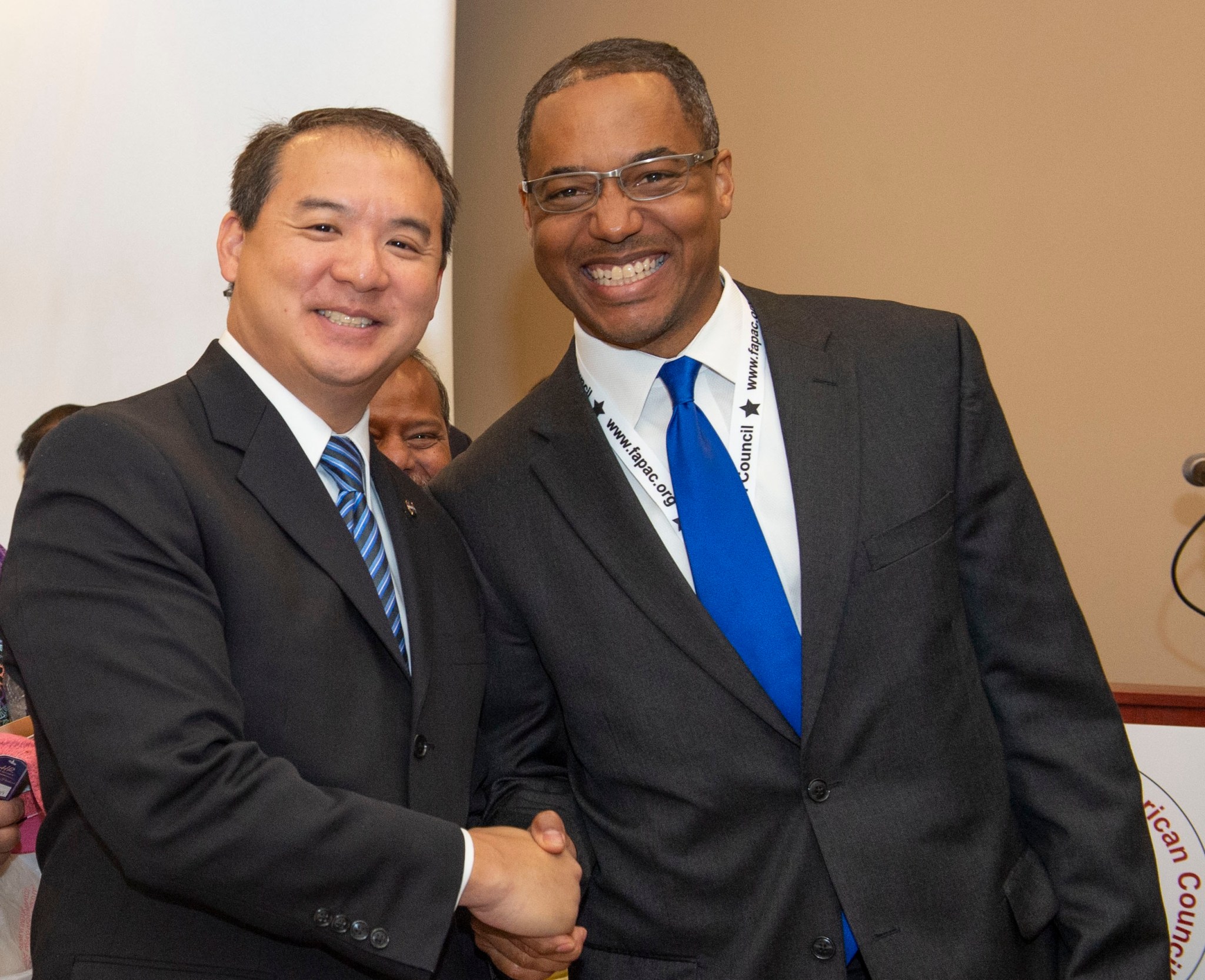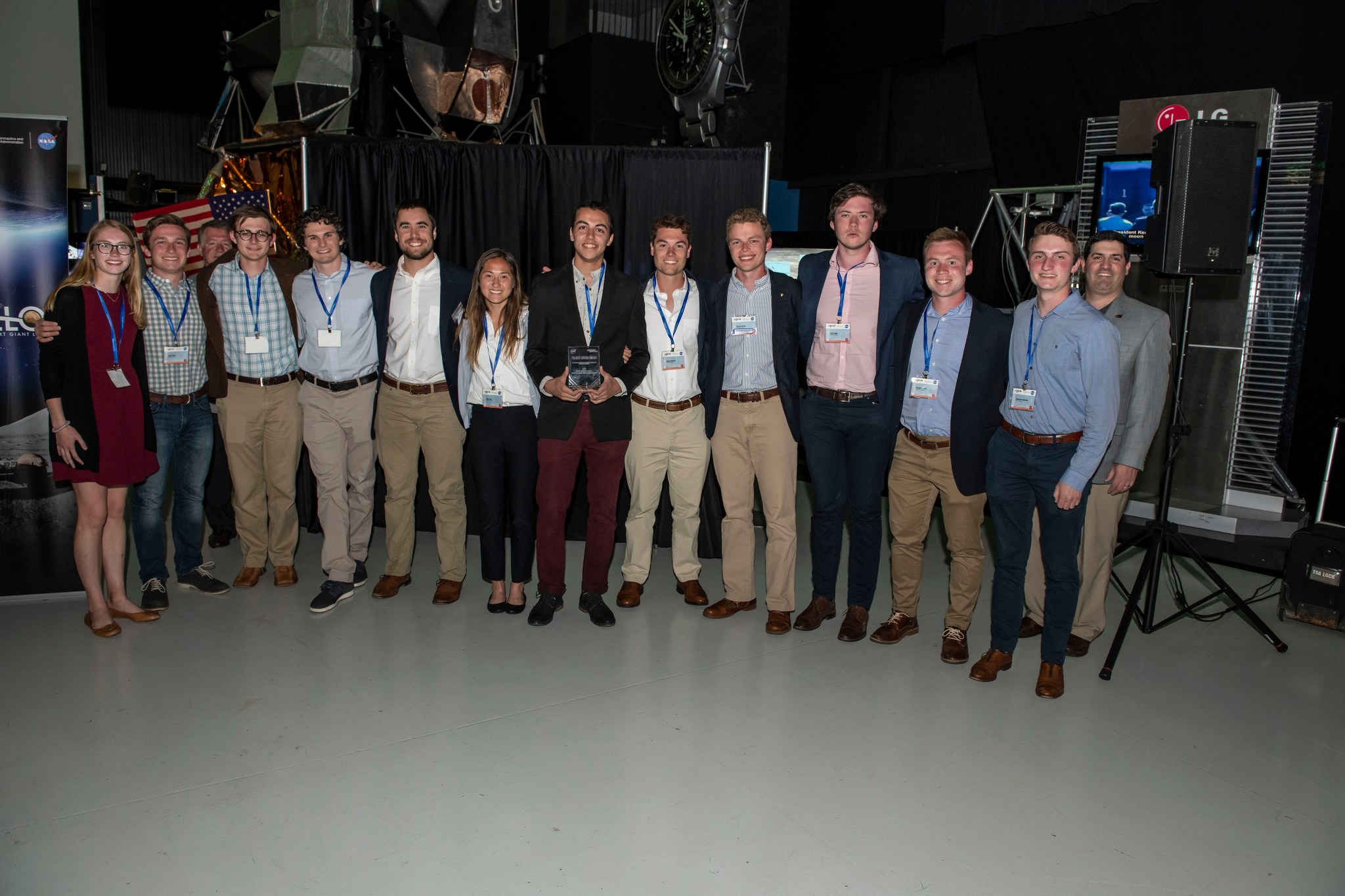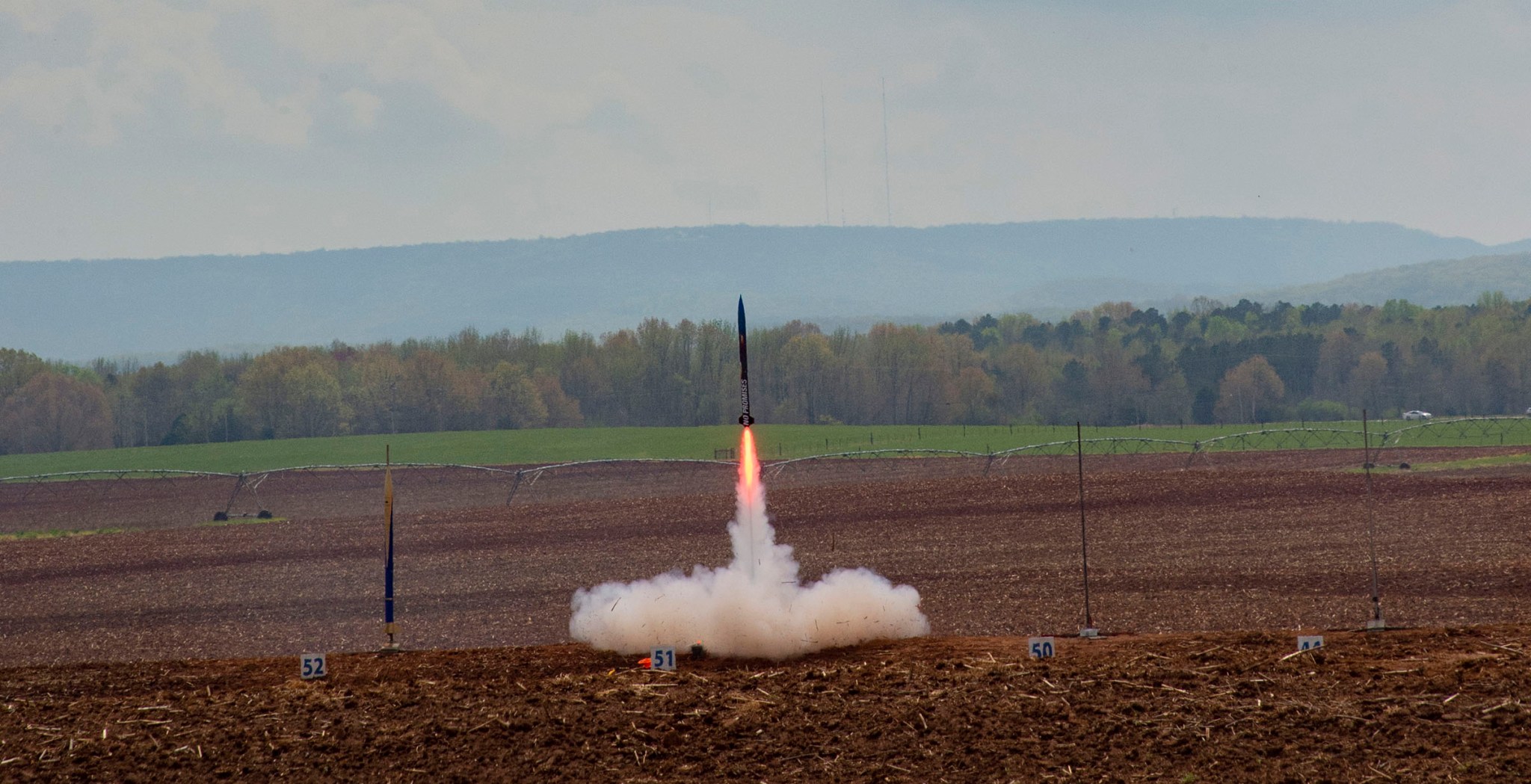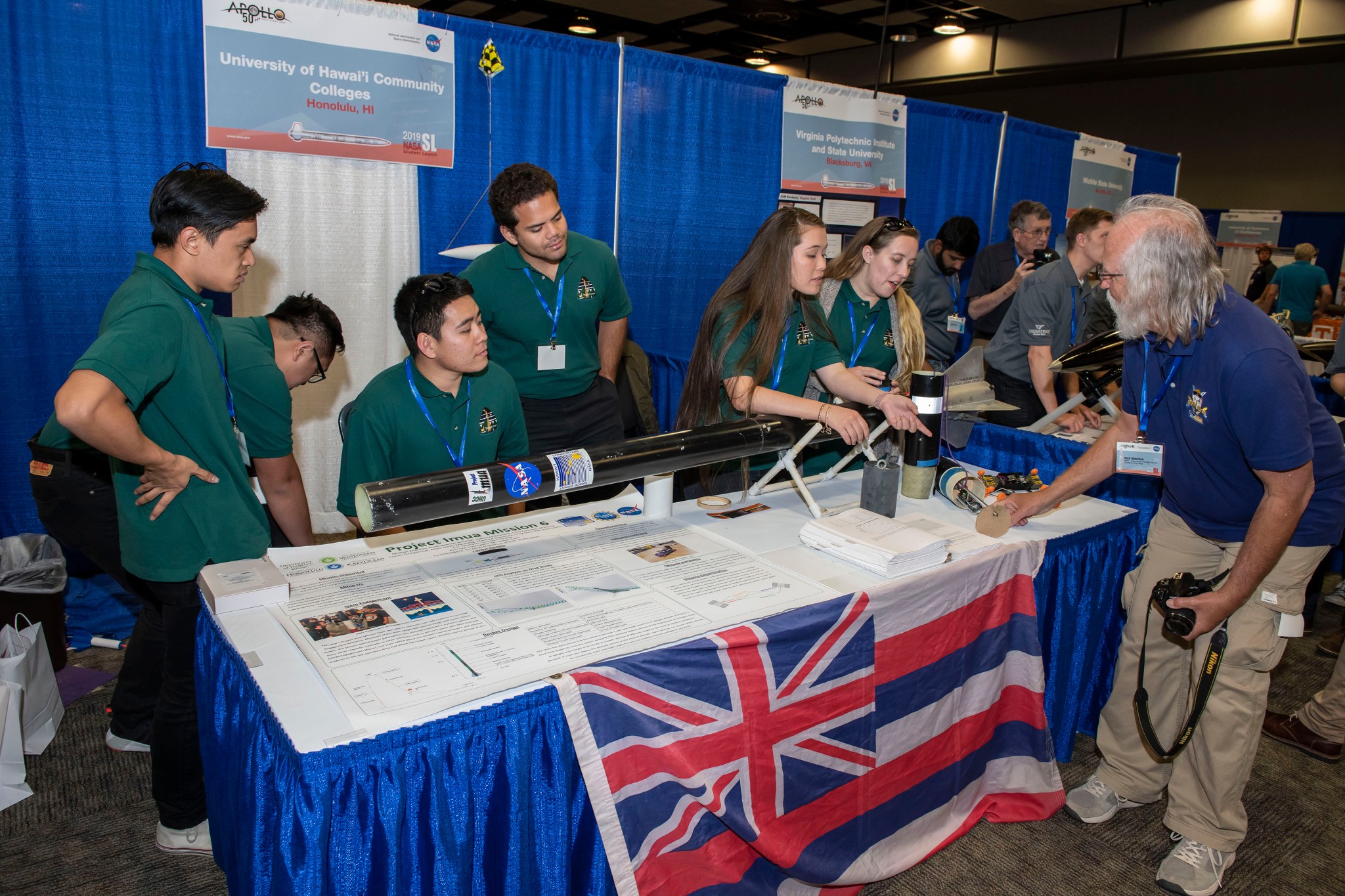In This Week’s Star
- NASA, Blue Origin Agreement Signals Rocketing Growth of Commercial Space
- Marshall, Others Team to Host Asian Pacific American Leadership Council
- Vanderbilt University Wins NASA’s 2019 Student Launch Competition
- Rocket Science in 60 Seconds: What Is the Space Launch System?
- Dawn Walton Celebrates 50 years at NASA
- Marshall Engineering Cost Manager Andy Prince Awarded Frank Freiman Lifetime Achievement Award
- Moonquakes Research, New Horizons Mission Highlighted on ‘This Week @NASA’
- This Week in NASA History: 1st Full-Duration Firing of S-II Flight Stage – May 20, 1966
NASA, Blue Origin Agreement Signals Rocketing Growth of Commercial Space
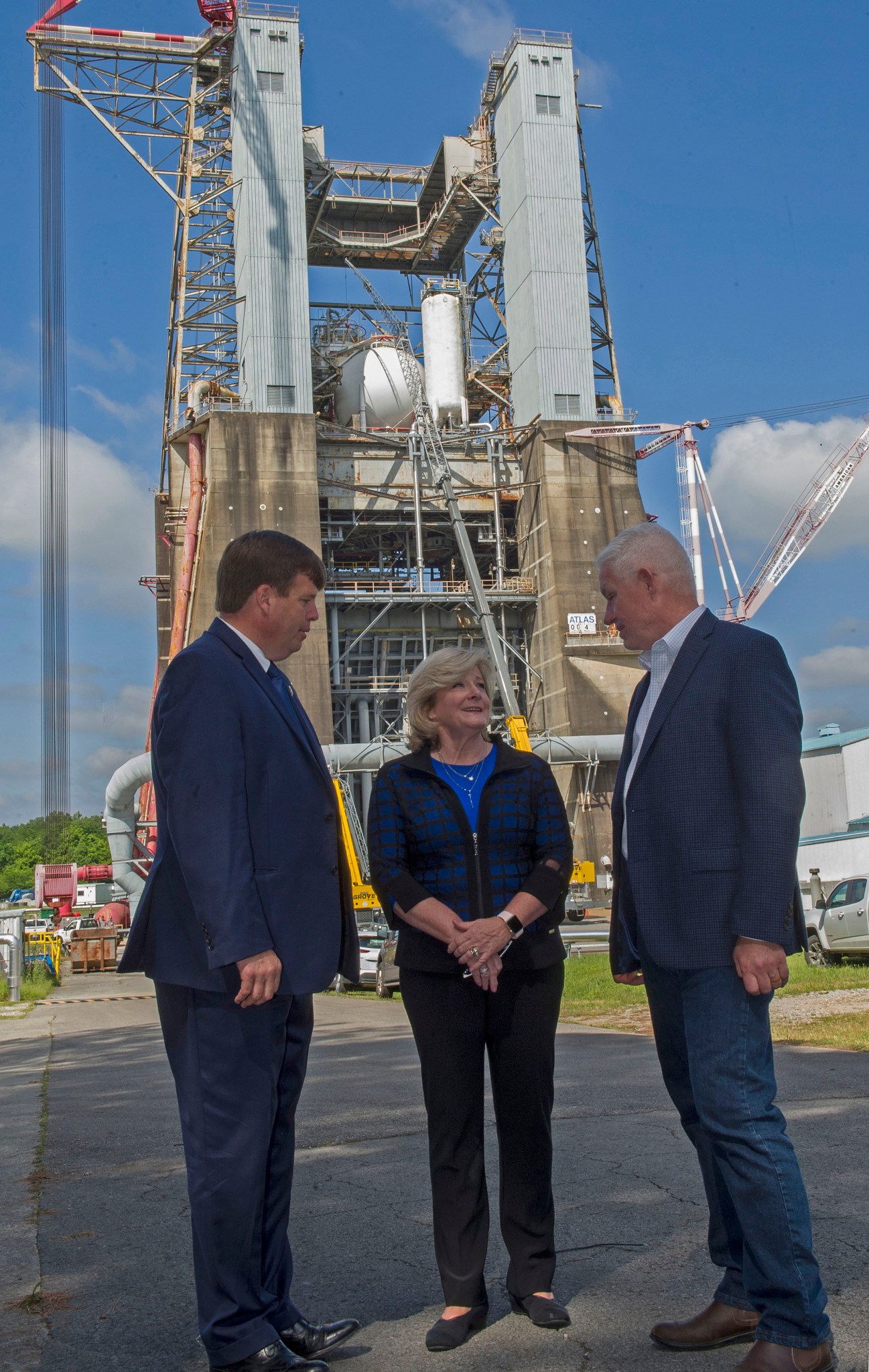
Jody Singer, NASA Marshall Space Flight Center director, center, and Dale Strong, Madison County commissioner, left, meet with Terry Benedict, chief operating officer for Blue Origin of Kent, Washington, on May 20, in front of historic Test Stand 4670 at Marshall. NASA and Blue Origin signed an agreement granting the private space company use of the test stand in April. Under a Commercial Space Launch Act agreement, Blue Origin will upgrade and refurbish the test stand to support testing of its BE-3U and BE-4 rocket engines. (NASA/Emmett Given)
Marshall, Others Team to Host Asian Pacific American Leadership Council
By Rick Smith
NASA’s Marshall Space Flight Center and various Huntsville and federal organizations partnered to host the Federal Asian Pacific American Council’s 34th National Leadership Training Program May 14-16 at the Von Braun Center.
The event featured panels and seminars with representatives of various government organizations, leadership workshops and networking opportunities — all designed to increase collaboration, engagement and representation among Asian Americans and Pacific Islanders at all levels of government.
“This was the first FAPAC event in Alabama, and a great occasion to highlight Marshall’s unique history and its continuing role in NASA’s mission,” said Loucious Hires, director of Marshall’s Office of Diversity and Equal Opportunity. “Like all federal agencies, we strive to showcase rewarding lifetime careers — not just for Asian Americans, but for anyone seeking to put their talent and perspective to use furthering the nation’s space program.”
Steve Shih, NASA associate administrator for Diversity and Equal Opportunity, delivered the opening address May 14, following introductory remarks by Huntsville Mayor Tommy Battle. Shih encouraged the roughly 250 participating federal and civilian workers to pursue “a diversity of experiences, knowledge and skills” — and challenged them to use everything they learn to empower others “to achieve greater success, engaging and uniting to accomplish their most important missions.”
That challenge struck a chord for Marshall Director Jody Singer, who spoke May 16 at the FAPAC 2019 Civilian Awards banquet.
“People truly are the fabric of who we are at Marshall, the key to all our successes,” she said. She hailed the council’s “selfless, inclusive and engaging” commitment to diversity and civic participation, and took part in a traditional tea ceremony presentation with members of the North Alabama Japanese Garden Club.
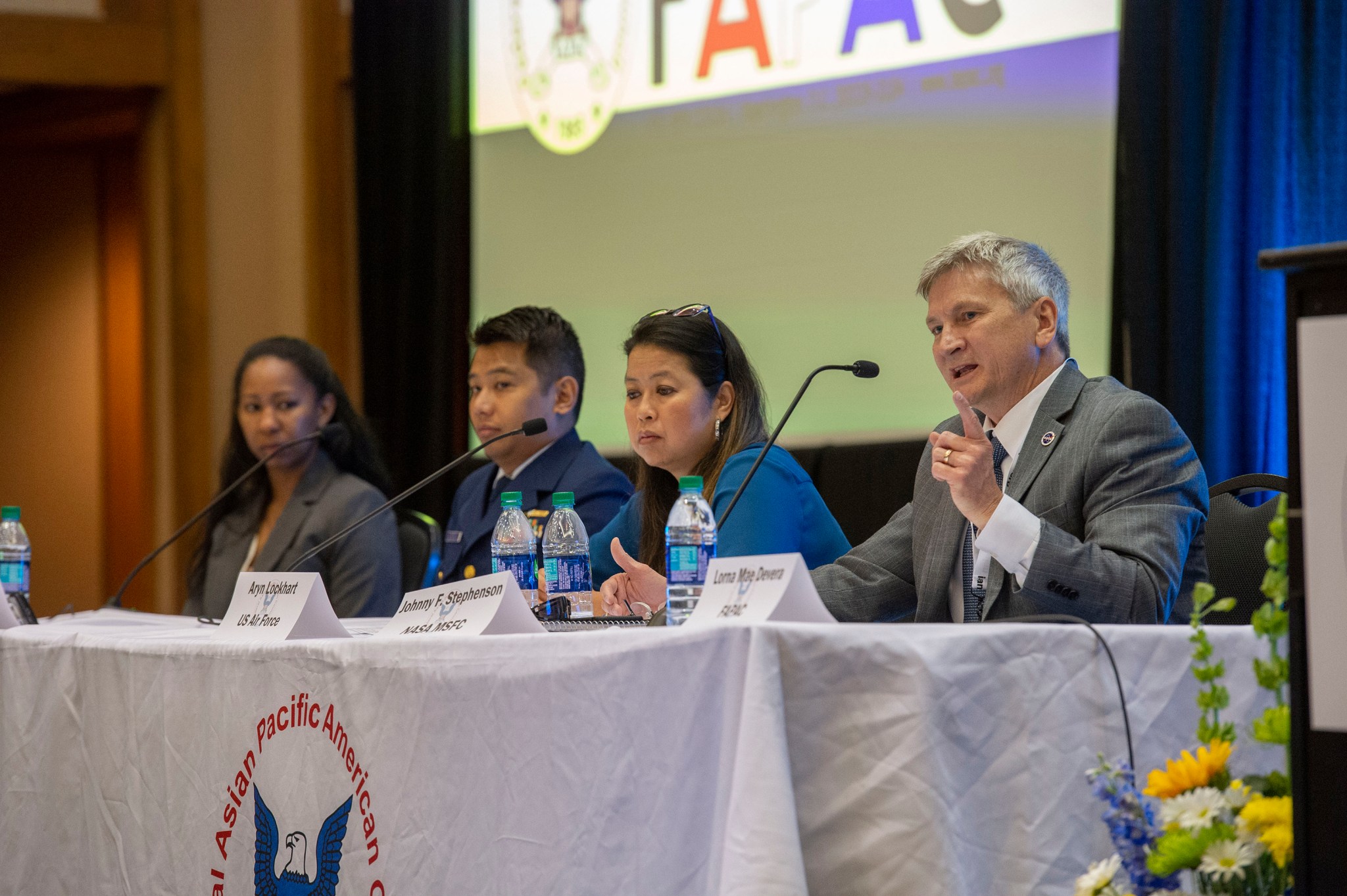
Among FAPAC honorees at the banquet was Johnny Stephenson, director of Marshall’s Office of Strategic Analysis and Communications. He received FAPAC’s 2019 Diversity Excellence Award, which recognizes remarkable contributions to diversity and inclusion.
Singer was an award recipient in 2018 for outstanding leadership in promoting diversity and equal opportunity at Marshall.
NASA, Redstone Arsenal, the City of Huntsville, the Huntsville/Madison County Chamber of Commerce, the Federal Bureau of Investigation and the U.S. Army Corps of Engineers cosponsored the 2019 conference.
“Typically, events like this one are held in the nation’s capital or in major metropolitan areas,” said Lien Moore, technical assistant in Marshall’s Space Systems Department and an organizer for the FAPAC conference. “Having Huntsville serve as a host city is a great way to bring a national leadership training event to the local federal community.
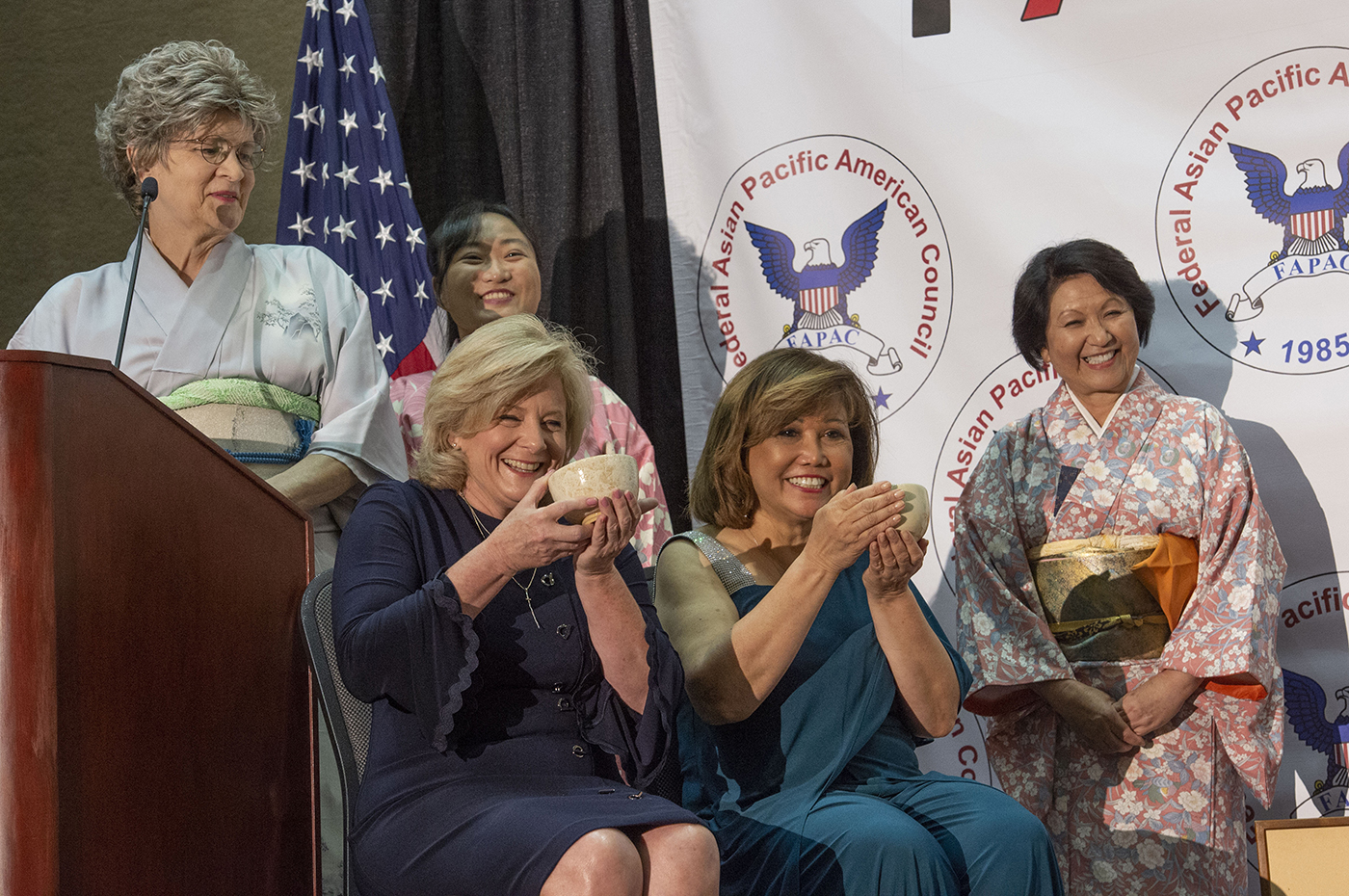
“We hope it will lead to other such minority-inclusive events here and continue to build our positive reputation for diversity and inclusiveness across the region,” she added.
Founded in 1985, FAPAC is a nonprofit organization promoting equal opportunity and cultural diversity for more than 30 ethnically distinct Asian American and Pacific Islander groups throughout the federal government. Its National Leadership Training Program provides high-quality training, networking opportunities and practical strategies for personal and professional development.
FAPAC holds the leadership training program each year in May to coincide with Asian American and Pacific Islander Heritage Month. The next program will be held May 11-15 in Leesburg, Virginia.
Smith, an ASRC Federal/Analytical Services employee, supports the Office of Strategic Analysis & Communications.
Vanderbilt University Wins NASA’s 2019 Student Launch Competition
NASA has announced the winners of the 2019 NASA Student Launch competition, with the Vanderbilt Aerospace Design Lab from Vanderbilt University in Nashville, Tennessee, claiming top honors. It is the team’s fifth win in the last six years.
This year’s challenge, hosted by NASA’s Marshall Space Flight Center, tasked student teams to propose, design, build and test a reusable rocket with a payload. The rocket had to reach a team selected altitude between 4,000 and 5,500 feet. Once reaching its highest point, the rocket deployed a recovery system and landed safely. The payload had to be a drone or rover that autonomously deployed from the rocket after the rocket landed. NASA engineers face similar questions as they design the Space Launch System rocket to send astronauts and payloads to the Moon.
“The 2019 Student Launch competition was extremely competitive as the teams were challenged with complex altitude and payload requirements,” said Katie Wallace, the Student Launch program manager at Marshall. “The teams rose to the challenge and brought innovation, creativity and excellence to the competition.”
The Vanderbilt team will receive a $5,000 award from Marshall industry partner Northrop Grumman for their win. The University of North Carolina-Charlotte finished in second place and will receive a $2,500 award from the National Space Club — Huntsville. The Rookie Award, given to the top new team in the competition, was won by the University of Hawaii Community Colleges from Honolulu, Hawaii.
The top 10 finishers in the college/university division are:
- Vanderbilt University, Nashville, Tennessee
- University of North Carolina at Charlotte
- University of Akron, Ohio
- Oregon State University, Corvallis
- California State University Long Beach
- University of Alabama in Huntsville
- Wichita State University, Wichita, Kansas
- North Carolina State University, Raleigh
- University of Hawaii Community Colleges, Honolulu
- University of South Florida, Tampa
Teams earn points during the eight-month competition, and the team with the most points wins. Awards also are presented in 11 different categories that range from payload design and safety to best social media presence and STEM — science, technology, engineering and mathematics — outreach. A full list of the 2019 category winners can be found here.
Completing the 19th year of competition, Student Launch provides a realistic experience to students to resemble the development, test and operational lifecycle NASA and industry engineers use when developing and operating new hardware.
Marshall’s Office of STEM Engagement manages Student Launch to stimulate innovation and advance NASA’s mission through collaboration with educational institutions and students — the next-generation who will help us explore the Moon and travel even farther to Mars. It also furthers NASA’s goal of attracting and encouraging students to pursue degrees and careers in the STEM fields. NASA’s Human Exploration and Operations Mission Directorate and the Office of STEM Engagement, as well as Northrop Grumman, and the Huntsville chapter of the National Space Club provide funding and leadership for the initiative.
See more Images from launch week.
Rocket Science in 60 Seconds: What Is the Space Launch System?
Rocket Science in 60 Seconds gives you an inside look at work being done at NASA to explore deep space. Kathryn Crowe is a systems engineer at NASA’s Marshall Space Flight Center. In this episode, she explains what powers NASA’s deep space rocket, the Space Launch System, and why it’s the only rocket that can move astronauts forward to the Moon — to stay — in 2024. (NASA)
Dawn Walton Celebrates 50 years at NASA
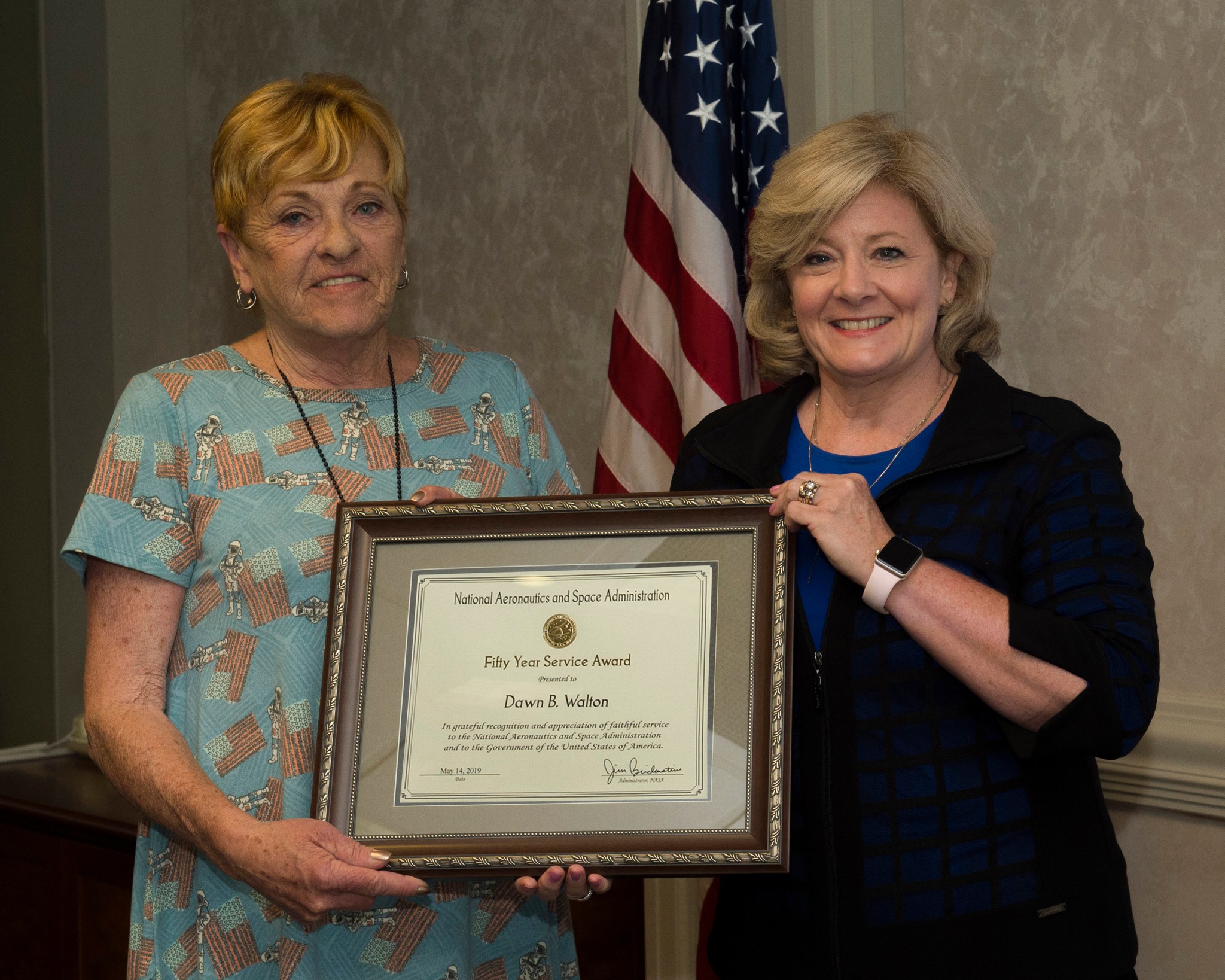
Dawn Walton, management support assistant for the Operations Directors Office in the Payload Operations Integration Center at NASA’s Marshall Space Flight Center, left, accepts a 50-year service award presented by Jody Singer, Marshall director, at the Executive Forum held May 20 in Building 4200. For 15 years, Walton has provided administrative support to the payload operations directors supporting the science operations on board the International Space Station. Her NASA career began in 1969 as a secretary in the Astrionics Lab and she has held several administrative positions during her tenure. Asked about her most memorable moments at Marshall, she recounted her time working for former astronaut Timothy “TJ” Creamer, who was a payload operations director at Marshall from 2011-2015. (NASA/Emmett Given)
Marshall Engineering Cost Manager Andy Prince Awarded Frank Freiman Lifetime Achievement Award
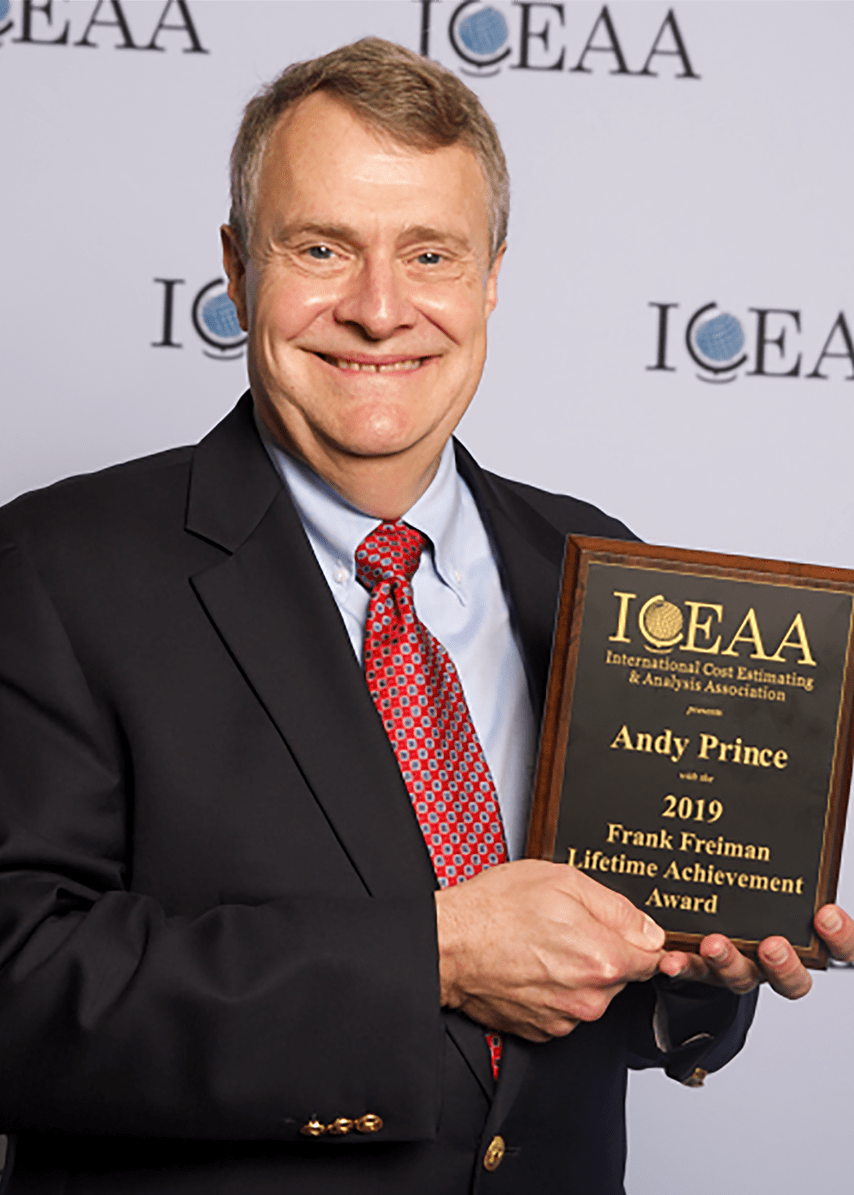
Andy Prince, manager of the Engineering Cost Office at NASA’s Marshall Space Flight Center, receives the Frank Freiman Lifetime Achievement Award at the International Cost Estimating and Analysis Association’s annual workshop in Tampa, Florida on May 15. The award is presented to an individual who has demonstrated exceptional dedication and made an outstanding contribution to the cost estimating and analysis community during his or her lifetime. ICEAA’s annual Professional Development and Training Workshop brings together professionals from government, industry and academic cost communities for an intensive program dedicated to developing the understanding and appreciation of using data-driven estimating and analysis techniques. (ICEAA)
Moonquakes Research, New Horizons Mission Highlighted on ‘This Week @NASA’
Two studies – one on lunar seismic activity and the other on NASA’s New Horizons’ Ultima Thule flyby — are featured in “This Week @NASA,” a weekly video program broadcast nationwide on NASA-TV and posted online.
Data from seismometers placed on the Moon by Apollo astronauts have provided the first evidence that the lunar surface is still active and likely producing moonquakes. Some of the quakes are believed to be around magnitude 5. Thrust faults — where a section of the Moon’s crust is pushed up over another — happen due to the gradual cooling of the Moon’s interior, causing the Moon to shrink. NASA Marshall Space Flight Center planetary seismologist Renee Weber is a co-author of the study, published in the journal Nature Geoscience.
A May 17 issue of the journal Science includes the first peer-reviewed scientific results and interpretations of the Kuiper Belt Object nicknamed Ultima Thule. The results and interpretations are based on data gathered during NASA’s New Horizons spacecraft’s historic flyby on New Year’s Day 2019. The initial data summarized in Science reveal much about the object’s development, geology and composition. In addition to being the farthest exploration of an object in history — 4 billion miles from Earth — the flyby of Ultima Thule was the first investigation by any space mission of a well-preserved planetesimal — an ancient relic from the era of planet formation. New Horizons is a project of the Science Mission Directorate’s New Frontiers Program, managed by NASA’s Marshall Space Flight Center for the directorate.
View this and previous episodes at “This Week @NASA” on NASA’s YouTube page.
This Week in NASA History: 1st Full-Duration Firing of S-II Flight Stage – May 20, 1966
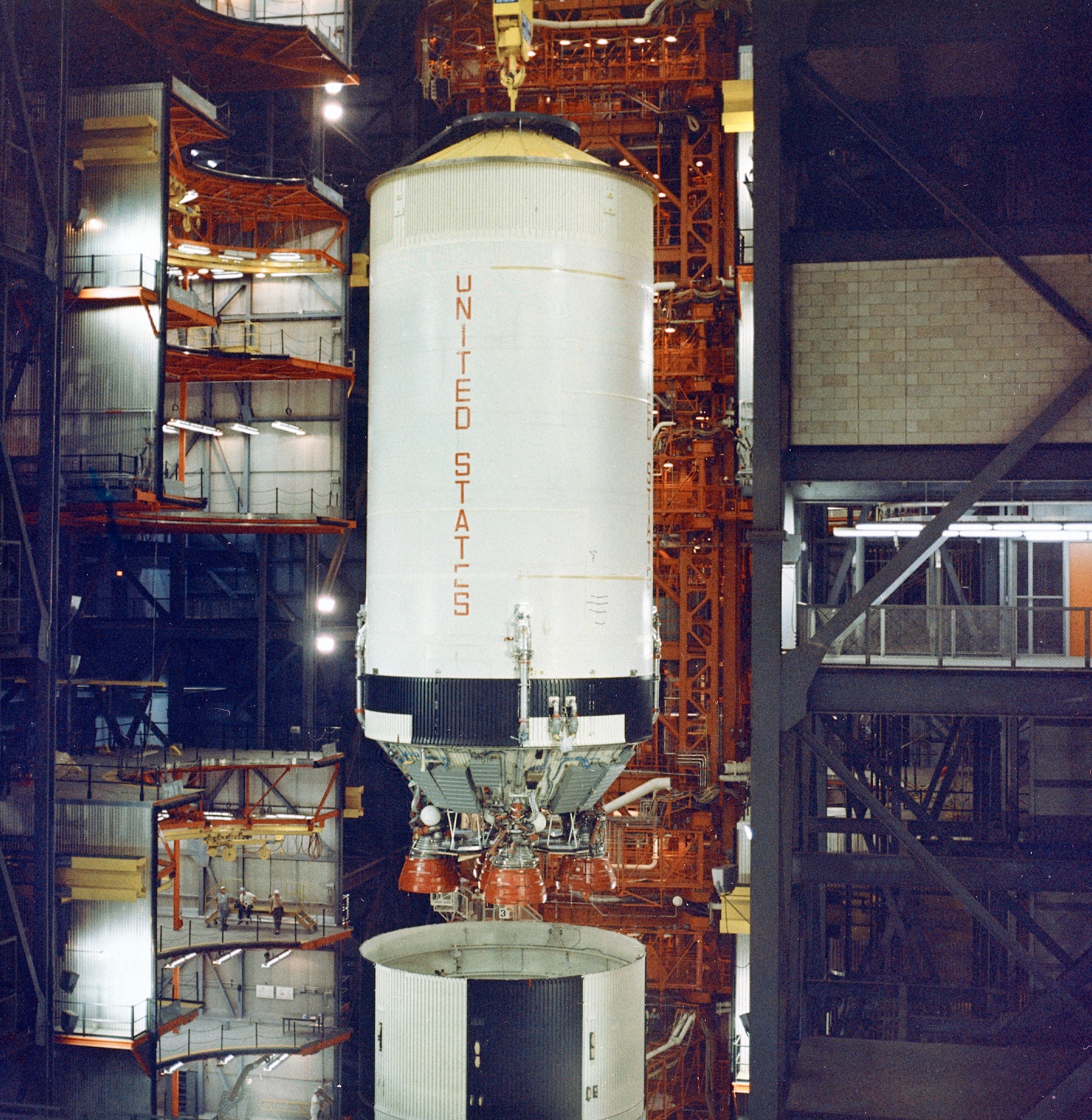
This week in 1966, the first full-duration firing of the S-II flight stage occurred at Mississippi Test Facility — now known as NASA Stennis Space Center — when S-II-T was test-fired for 354.5 seconds. This was the fourth static firing of the S-II-T. Developed by the Space Division of North American Aviation under the direction of NASA’s Marshall Space Flight Center, the S-II, or second, stage of the Saturn V employed five J-2 engines, each capable of producing 225,000 pounds of thrust. Here, the S-II of the Apollo 6 mission is being lowered atop the S-IC, or first, stage of the Saturn V vehicle during final assembly operations in the Vehicle Assembly Building at NASA’s Kennedy Space Center. Now through December 2022, NASA will mark the 50th anniversary of the Apollo Program that landed a dozen astronauts on the Moon between July 1969 and December 1972, and the first U.S. crewed mission – Apollo 8 – that circumnavigated the Moon in December 1968. The NASA History Program is responsible for generating, disseminating and preserving NASA’s remarkable history and providing a comprehensive understanding of the institutional, cultural, social, political, economic, technological and scientific aspects of NASA’s activities in aeronautics and space. For more pictures like this one and to connect to NASA’s history, visit the Marshall History Program’s webpage. (NASA)


























